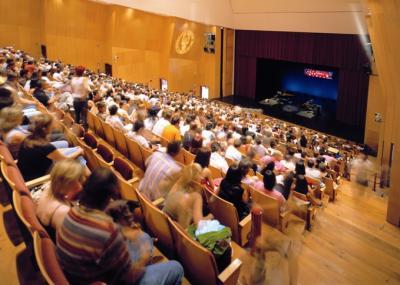When we think of rapprochements with science fiction, almost instantly numerous references come to mind in the area of the narrative literature or film. Notwithstanding, since its origins until today, the literature of the theater has given a place to all types of genres and forms, including the genre of science fiction. That is the aim of this research, recently published in Insula, the most widely disseminated literary Hispanist review in the world. The study's author, Julio Enrique Checa, from the Department of Humanities: Philosophy, Language and Literature at this Madrid public university, explained that "until relatively recently it was not considered that science fiction also had a place in Spanish dramaturgy, yet it has been a constant since the beginning of last century and continues to be so."
One of the objectives of this study, precisely, is to make this genre visible in the theater, which usually is excluded in all of the types of classifications that are made in this respect. Furthermore, the relationship between science fiction and dramaturgy is not different, speaking in general terms, from other literary manifestations or genres, according to this professor of literature. "In addition, in the case of the theater – he pointed out – everything that has to do with staging, adaptation and production contributes to making the problems and relations posed more complex." The result is: a much more encompassing look at what science fiction represents in the construction of contemporary fictional characters. In this case, the presence at the same time of performers and spectators, the delineation of spaces, the semiotization of everything occurring during the scene, the choice of structures that have to be enunciated in a certain way, the economy of the language of drama, as well as the temporal limits of performance or particular use of objects or illumination, among other aspects, have been shaping codes which we can specifically recognize as those of the theater, the study points out.
More than 100 years of history

The picture shows one of the most important auditoriums in the Carlos III University of Madrid.
(Photo Credit: Carlos III University of Madrid)
Within this research framework, Professor Julio Enrique Checa also carries out a short historical review of this form in Spanish dramaturgy. Thus, he goes back to the year 1909 when the novelist and theater critic, Ramón Pérez de Ayala, published his work "Sentimental Club", later entitled "La revolución sentimental" (1929) or several works by Jacinto Grau, such as "El señor de Pigmalión" (1921) or "La casa del Diablo" (1933), which describes a technological world where men carry portable phones and other devices, forming a gloomy dystopia
The Spanish dramaturgy of science fiction which has produced works of outstanding quality since the 1980's, is also encompassed in the article by this UC3M professor. Regarding, the staging, noteworthy is that of the company "La Fura dels Baus" or "Els Joglars", not to mention companies like "Sexpeare" as well as other authors and directors. Likewise, added Checa, the recent generation of playwrights have contributed in this area and produced some remarkable works, such as "La máquina de hablar" (Victoria Spunzberg, 2007), "Milonga de la enzima dorada" (Álvaro Lizarrondo, 2010) and "Oración por un caballo" (Lola Blasco, 2010) which offer readers and spectators a stunning repertoire, on par with other artistic manifestations related to the science fiction genre.
Source: Carlos III University of Madrid